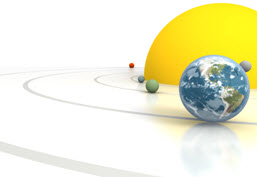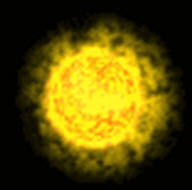Our Life Giving Star


It is estimated that the Sun was formed about 4.57 million years ago. It is the star at the centre of the Solar system. It is the nearest star to the earth. Other stars are so far that they look as spots of light only. The Sun is by far the largest object in the solar system and its interior could hold over 1.3 million earths. The Sun is a big ball of hot gases. It is not a solid and doesn’t have a definite boundry. The Sun produces huge amount of energy in its core i.e. it’s centre. The energy produced in the core travels through many layers of gases to it’s surface. This energy escapes as heat & light. Day & night on the Earth are due to the revolution of the Earth around the Sun.
Without it the Earth would be cold & dark with no life at all. Several dark spots are observed on the surface of the sun, which are called sun spots. These are small areas which appear darker than the surroundings because of low temperature.
The brightness of the sun can cause pain if seen with naked eyes.
Refer the given composition to answer the following questions:
(A) Because the Sun is not a star
(B) Because the Sun is very far from us
(C) Because the Sun is very near to us
(D) Because the Sun is a giant ball of superhot gases
(A) Because they are very small
(B) Because they are very cool.
(C) Because they are very far from us
(D) None of these
(A) The Moon (B) The Earth (C) The Saturn (D) The Sun
(A) Core of the Sun
(B) Surface of the Sun
(C) All over in the Sun
(D) It takes energy from other celestial bodies.
(A) Revolves (B) Rotates
(A) True (B) False
(A) Satellite (B) Star (C) Planet (D) Glacier
(A) Because they are very small.
(B) Because they are very hot.
(C) Because they are very big.
(D) Because they are cooler than the rest of the part of the Sun.
(A) True (B) False
(A) Revolution of the Earth around the Sun
(B) Rotation of the Earth on its own axis.
(C) Both of these
Answer keys
(1) (C); (2) (C); (3) (D); (4) (A); (5) (A); (6) (B); (7) (B); (8) (D); (9) (B); (10) (A)